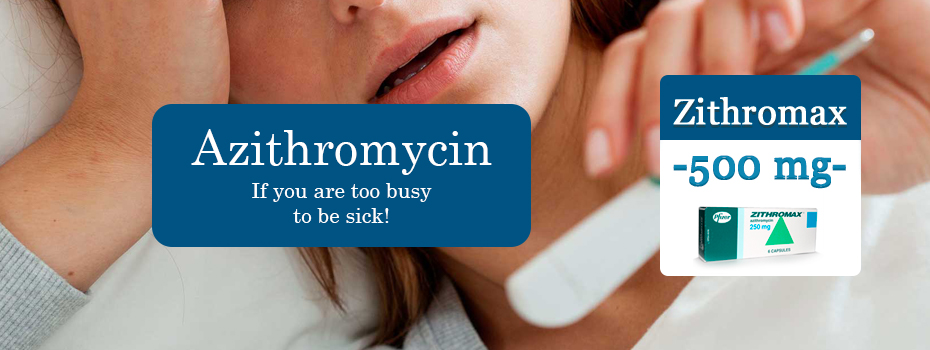Antibiotic is associated dysbacteriosis
The numerous microbiocenosis of intestines of the person is presented more than 500 species of microorganisms, and in various departments of a gastroenteric path their quantity fluctuates from 103 to 1012 CFU/ML.
The most numerous representatives of microbic community of intestines of the person are Bifidobacterium sp., E. coli, Lactobacillus sp., Bacterioides sp., anaerobic streptococci, Clostridium sp. And many other things. Microorganisms of a gastroenteric path provides digestion and absorption processes, trophic intestines, antiinfectious protection, synthesis of vitamins etc. Other Most numerous and most well studied are the microorganisms of a thick gut numbering nearby 1012 CFU/ML.
Various factors of the external and internal environment can essentially influence structure of intestinal microflora that can not only break a normal current of physiological processes, but even to lead to heavy pathological conditions. Qualitative and-or quantitative change of structure of intestinal microflora name intestines dysbacteriosis. The dysbacteriosis is always secondary. The most frequent reason of development of a dysbacteriosis of intestines – application of the antibiotics preparation directly suppressing ability to live of intestinal microorganisms and essentially changing «a microbic landscape» gastroenteric path.
Other reasons of occurrence of a dysbacteriosis are inflammatory diseases of a mucous membrane of intestines both infectious, and the noninfectious nature. A considerable role among noninfectious factors long functional frustration of a gastroenteric path, including biliary play systems, and also fermentopathy and allergic defeat of a mucous membrane of intestines. Sushestvennoe change of microflora of intestines occurs under the influence of ecologically adverse factors of environment and stressful conditions of an organism: physical and mental overloads.
Influence of the age factor on intestines microbiocenosis isn'ted. At children the dysbacteriosis develops quickly enough that is connected with enzymatic and immune immaturity of intestines. At older persons age easing enzymatic and immunological activity of a mucous membrane of intestines, and as change of a way of life, decrease in impellent activity and character of a food is marked. It is important to notice that intestines dysbacteriosis, without being disease (hence, it can't be the diagnosis), represents the important pathological process, capable to lead to a crushing defeat of a gastroenteric path which should be considered at definition of tactics of treatment of the patient.
Really, infringement of structure of intestinal microflora can promote damage enterocytes and to infringement of physiological processes in intestines, to lead to increase of intestinal permeability for macromolecules, to change a motility, to reduce protective properties of a mucous barrier, creating conditions for development of pathogenic microorganisms.
Complex of pathological shifts as a part of intestinal microflora with the corresponding clinical displays, connected with the dysbacteriosis which has developed owing to application of antibiotics, in the foreign literature often designate as an antibiotic-associated a diarrhea (antibiotic associated diarrhea). Proceeding from our representations about this process «an antibiotic-associated intestines dysbacteriosis» it is possible to consider the term more pathogenetically proved. Frequency of the given condition, according to various authors, fluctuates from 5 to 39 %. It is natural that at these patients practically always endoscopically and histologically it is possible to reveal signs colitis that does proved also the term «an antibiotic-associated colitis». Risk factors of its development are age of the patient (is more younger 6 years and is more senior 65 years), accompanying diseases of digestive organs, and also decrease in function of immune system.
The majority of modern antibiotics can become the reason of an intestinal dysbacteriosis though action of each of them has certain features. In particular, ampicillin substantially suppresses growth as aerobic, and anaerobic microflorae whereas amoxicillin online only minimum suppressing activity of the majority of normal intestinal microorganisms, promotes some increase in population of representatives of sort Enterobacteriacaea. Similarly the intestines microbiocenosis is influenced by the combined preparation amoxicillin and clavulanic acids. Thus the majority of modern penicillin don't promote reproduction of mushrooms and C.difficile.
Oral cefpodoxime, cefprozil and ceftibuten definitely promote growth of number of representatives of sort Enterobacteriacaea in intestines whereas cefaclor and cefradin practically don't render influence on intestinal microflora, and application cefixime conducts to considerable decrease anaerobic microorganisms. It is important that the majority cephalosporins promotes number growth enterococci and C.difficile. Fluoroquinolones substantially oppress growth of microbes of sort enterobacteriacaea and to a lesser degree – enterococci and anaerobic microorganisms, without promoting thus to growth of mushrooms and C.difficile.
To the heaviest and even a condition menacing to life connected about an antibiotic-associated by a dysbacteriosis of intestines, is so-called C.difficile-associated colitis, caused by superfluous reproduction in intestines C.difficile. Last in norm reveal at bacteriological research at 1–3 % of healthy faces, but more than at 20 % of the patients receiving antibacterial therapy. Some patients, against oppression of normal flora by reception of antibiotics have an avalanche growth of population C.difficile to its change toxigenic properties, including the crushing defeat of a mucous membrane of a thick gut becomes synthesis increase enterotoxin And and V.Rezultatom's cytotoxin of it. More often C.difficile–associated colitis develops at application clindamycin or lincomycin, semisynthetic penicillin, is more rare – cephalosporins with a wide spectrum of antibacterial action. The heaviest form With. Difficile-ASSOCIATED colitis is pseudomembranous colitis, the lethality at which development reaches 30 % .
Typical symptoms pseudomembranous colitis are severe pains in a stomach, lifting of temperature to 40°C, frequent (10–20 times a day) a liquid chair with a slime and blood impurity. Also signs heavy endotoxemia are often observed, and in blood reveal leukocytosis and increase ESR. In a thick gut of 0,5-2,0 sm in diameter on slightly raised basis are found out hyperemia a mucous membrane and fibrinous the films formed on sites necrosis of a mucous membrane, in the form of pale serovato-yellow plaques in the size. Sites necrosis a mucous membrane of a thick gut, a hypostasis submucosal a layer, infiltration own plate and focal rythrocytes histologically come to light. The Most accessible trouble-shooting test at pseudomembranous prick is definition in excrements of toxin And C.difficile a latex-agglutination method.
The first year of life of the child, and especially its first months, are the most vulnerable from the point of view of development of any dysbacteriosis of intestines, including an antibiotic-associated. It is connected by that at this time there is a primary formation of intestinal microflora that in a combination to immaturity of immune system does its rather unstable under the relation to many exogenous to factors.
The factors providing favorable conditions for formation of normal microflora of intestines, promote preventive maintenance an antibiotic-associated of a dysbacteriosis not only during this age period, but, to a greater or lesser extent, throughout the further life of the child. The great value for formation of intestinal microflora has natural feeding as at the expense of the immunological factors which are present at female milk, and in connection with presence in milk prebiotics. The first circumstance matters in connection with relative immaturity of immune system of the newborn child while intestines settling by certain species of microorganisms should be supervised both specific, and nonspecific mechanisms.
In particular, the newborn child can synthesize in enough only antibodies of a class of M while antibodies of a class And within the first month of life practically aren't formed and arrive in a gastroenteric path of the baby with milk of mother. With milk of mother arrive as well nonspecific factors which together provide all not only effective antiinfectious protection of the child during the most vulnerable period of his life, but also – normal process of settling of intestines by microorganisms.
At female milk there are also providing growth and reproduction of normal intestinal microflora nutrients, received the name «prebiotics». Prebiotics is partially or completely indigestible components of food which selectively stimulate growth and-or a metabolism of one or several groups of the microorganisms living in a thick gut, providing normal structure of an intestinal microbiocenosis. Prebiotics female milk are lactose and oligosaccharides. The last were absent until recently in mixes for artificial feeding, however now is active in them various combinations galakto are entered, in particular.
The action mechanism of all prebiotics is uniform: without being split in a small intestine by fermental systems of a macroorganism, they are utilized by microflora, mainly, bifido - and lactic acid bacillus, providing their growth and activity. Besides, as a result of a bacterial metabolism of lactose and oligosaccharides in a thick gut the optimum maintenance of short the fat acids necessary for stable functioning colonocytes is provided. Thus, for maintenance of normal formation of intestinal microflora natural feeding is extremely desirable, and at its impossibility use of the mixes containing prebiotics is recommended.
Thus, becomes obvious that numerous external factors are capable to break formation of intestinal microflora at the newborn child. Antibiotic, even proved, at children of the first year of life can lead to a heavy dysbacteriosis of intestines, however at children more advanced age and even at adults it can seriously break already generated intestinal biocenosis.
Thereupon one of the problems which have arisen last years, development of a dysbacteriosis of intestines against eradication H.pylori. The structure H.pylori schemes in various combinations can include various antibacterial preparations, such as amoxicillin, macroleads (clarithromycin, roxitromicin, azithromycin), metronidazole, furazolidone, subcitrate bismuth, and also the modern preparations reducing gastric secretion (blockers of the proton pump or blockers H2–histamine of receptors), also capable though and indirectly, to lower resistance of natural intestinal microflora.
Numerous researches testify to necessity of inclusion for complex therapy of the helikobakter-associated diseases of the top departments of a digestive path of biological products, in particular, bifidum-containing that allows to reduce frequency of development and depth of expressiveness dysbiotic changes and, as consequence, to reduce expressiveness and duration of preservation painful abdominal and dyspeptic syndromes at children .
Preventive maintenance and correction an antibiotic-associated of a dysbacteriosis of intestines is enough difficult problem, especially at children of the first year of life, especially, if antibacterial therapy has to be continued under vital indications. A basis of preventive maintenance of a dysbacteriosis of intestines is rational antibiotic and an exception of unreasonable cases of appointment of antibacterial means. At children of the first year of life the important factor of preventive maintenance is preservation of chest feeding or, at impossibility, use of mixes with prebiotics. Usually treatment includes following directions: decrease superfluous microbic colonization a small intestine and restoration of normal microflora.
For decrease microbic colonization a small intestine in adult practice use of antibiotics and other antiseptic tanks is accepted. But at children of early age in the absence of clinical and laboratory signs enterocolitis use not antibiotics, and the preparations concerning group probiotics is preferable. It first of all sporous monocomponental probiotics. For children is more senior 2 years it is most preferable monocomponental probiotics, containing barmy mushrooms, – enterol.
At the second stage of therapy the basic attention is given to restoration of normal microflora. Are with that end in view used as widely known monocomponental (bifidumbacterin, etc.), and polycomponental (primadofilyus, etc.) and combined probiotics. In some polyvalent preparations along with strains bifido - and lactobacillus are included strains enterococci, possessing high antagonistic activity in relation to is conditional-pathogenic and pathogenic activators. It considerably raises activity of preparations in comparison with monocomponental probiotics.
In treatment of the dysbacteriosis of intestines associated with antibiotics now key position occupy probiotics – the preparations containing microorganisms which make positive impact on an intestinal microbiocenosis. I.I.Mechnikov awarded for a series of works in this direction of the Nobel Prize in the field of medicine in 1908 In particular became the founder of the concept probiotics, it has shown that separate microorganisms are capable to oppress growth of a cholera vibrio, and others – on the contrary, to stimulate. Since then a considerable quantity of microorganisms which could find application in daily medical practice as a part of probiotic preparations and foodstuff has been studied, however only few of them officially admit today those.
The basic criterion thus is the probiotic effect proved in double blind placebos-supervised researches. This "examination" have passed B. bifidum, Lactobacillus acidophilus, Lactobacillus GG, Lactobacillus fermentum, Strepto (Entero) coccus faecium SF68, S. termophilus, Saccharomyces boulardii. The listed microorganisms are a part of numerous preparations, both monobacterial, and combined. On the other hand, the microorganism with the minimum losses should overcome the top departments of a digestive path in this connection there is a necessity of its placing for a rn-sensitive capsule. At last, long preservation of microorganisms in the course of storage is provided them lyophilization.
Preparation which corresponds to the requirements listed above, Linex representing a complex 3 live lyophilized of bacteria Bifidobacterium infantis v.liberorum, Lactobacillus acidophilus and Streptococcus faecium in quantity not less 1,2x107 is. Important feature of the microorganisms which are a part of Linexa, their stability to antibiotics and chemotherapeutic means, resistance to penicillin, including semisynthetic, to macroleads, cephalosporins, fluoroquinolones and tetracyclines is. This circumstance allows to apply Linex in need of a combination with antibiotics for the purpose of dysbacteriosis preventive maintenance. The listed features allow to allocate Linex among preparations for correction of a dysbacteriosis of intestines of a various origin.
We had been carried out the analysis of results of correction an antibiotic-associated of a dysbacteriosis of intestines a preparation of Linex at 8 children at the age from 6 to 12 months (1st group) and 19 children at the age from 1 year till 5 years (2nd group) at which development of a dysbacteriosis of intestines could be connected with application oral antibiotics from group of penicillin and cephalosporins in age dosages. Appointment of these preparations has been connected with treatment of sharp diseases of respiratory organs. In all cases against reception of an antibiotic in the end of a course chair increase (to 8 times a day) which had pappy or liquid character was marked and contained slime and greens impurity.
The general condition of the child in all cases was defined by character of the basic pathological process, and the unstable chair remained and after its knocking over. In connection with infringement of a chair children were surveyed in terms from several days till 2 weeks from the moment of occurrence of intestinal infringements. At bacteriological research of excrements at all the intestines dysbacteriosis which general characteristic decrease bifido was considerable has been revealed. For the purpose of its correction children received on 1 capsule of a preparation of Linex 2 times a day. Clinical improvement (chair normalization) was observed at 6 children from 1st group and 14 children from 2nd group within 7 days, at 7 children from 1st group and 16 children from 2nd group within 14 days, at 17 children from 2nd group within 21 days. For the specified term at 1 child from 1st group and at 2 children from 2nd group the chair wasn't normalized completely, remaining pappy though slime and greens impurity have disappeared.
Through 21 put microbiological improvement it has been noted at all children though normalization of indicators of quantity bifido - and lactobacillus was marked only in half of cases (at 5 children from 1st group and 10 children from 2nd group). The effect from spent treatment didn't depend on duration and character of the spent antibacterial therapy which have become by the reason of a dysbacteriosis of intestines. The obtained data allows to draw a conclusion on efficiency of correction an antibiotic-associated of a dysbacteriosis at children Linexom containing live freeze-dried lactic acid bacteria, bifidobacteria and enterococci. Joint application of Linexa and raised efficiency of therapy: symptoms were stopped at 8 children from 10 at the age of 4–7 years. Appointment of a preparation of Linex during a course antibiotics excluded development of clinically obvious dysbacteriosis bowel approximately in half of cases (at 6 from 11 children).
Thus, even well-founded application of antibiotics can lead to development of a serious dysbacteriosis of the intestines which consequence can be colitis. Joint application probiotics with antibiotics allows to lower risk of the dysbacteriosis associated with antibiotics or to reduce its weight. In case of development an antibiotic-associated of a dysbacteriosis of intestines at children appointment of the biological products which effect can be strengthened enterosorbents is shown. Development C. Difficile-associated colitis demands the special therapeutic tactics including application of specific antibacterial preparations, but also not excluding probiotics.










